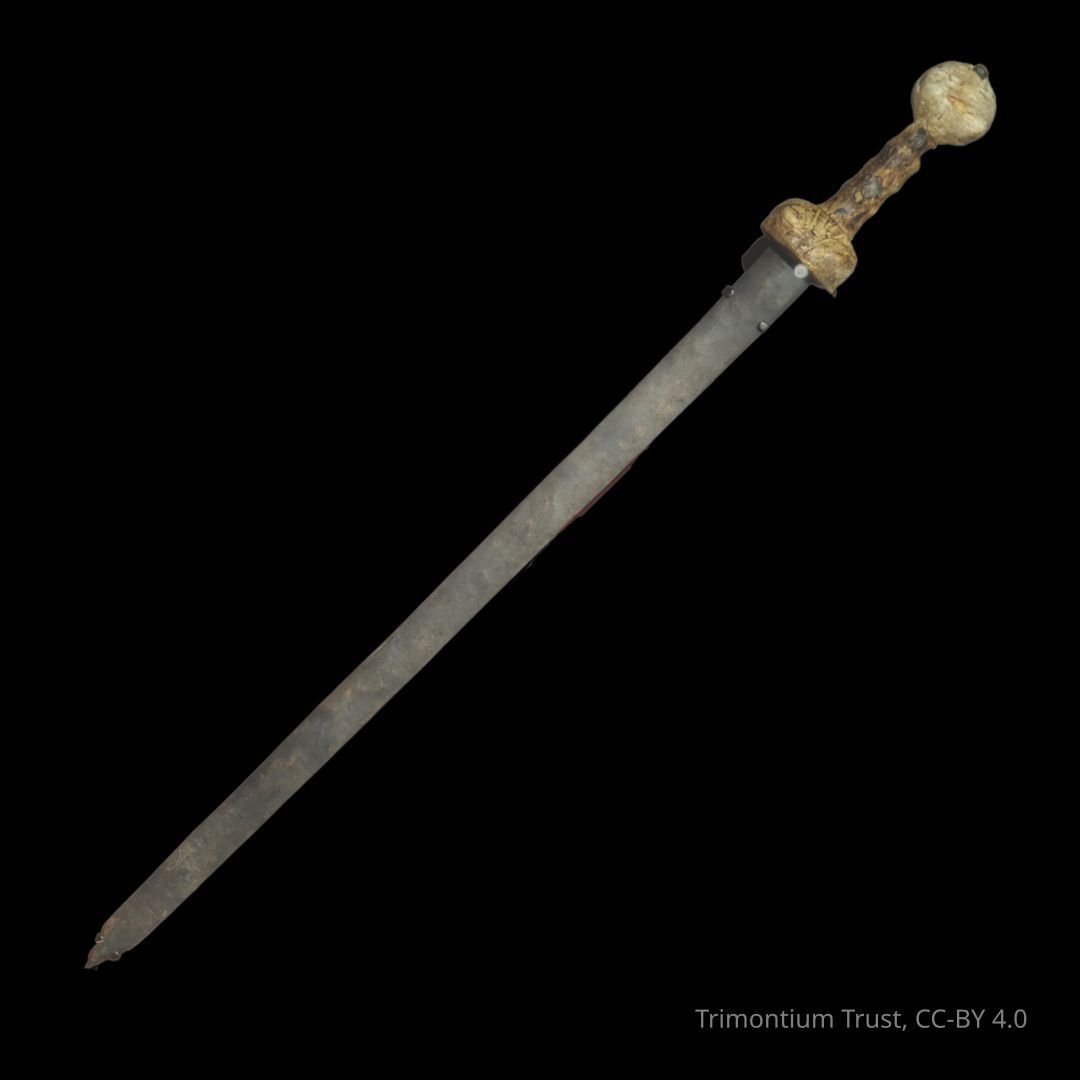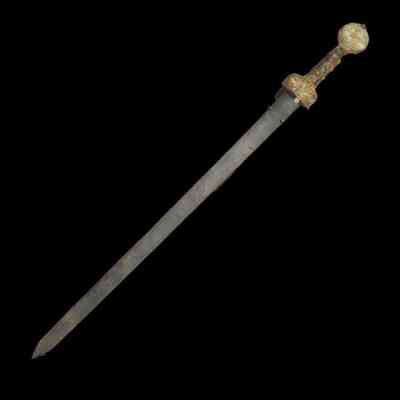Cavalry sword
Name/Title
Cavalry swordEntry/Object ID
L.2021.11Description
Cavalry sword (spatha) with full bone/ivory grip assembly hiltUse
Used in combat. The spathae were long, narrow swords with a midrib.Context
Found in Germany. In the late 2nd century, the auxiliary cavalry began to carry a longer sword than ones used by legionaries.Collection
HvGCategory
Military Equipment & Weaponry
Acquisition
Source (if not Accessioned)
Holger von GrawertNotes
LoanMade/Created
Time Period
1st - 2nd centuryEthnography
Cultural Region
Continent
EuropeCulture/Tribe
Romano Germanic

